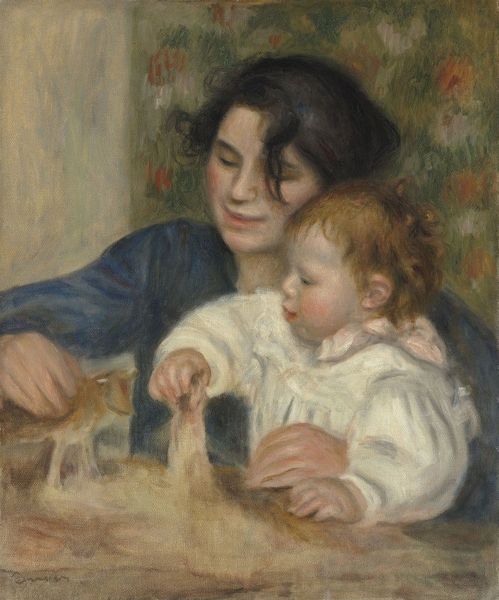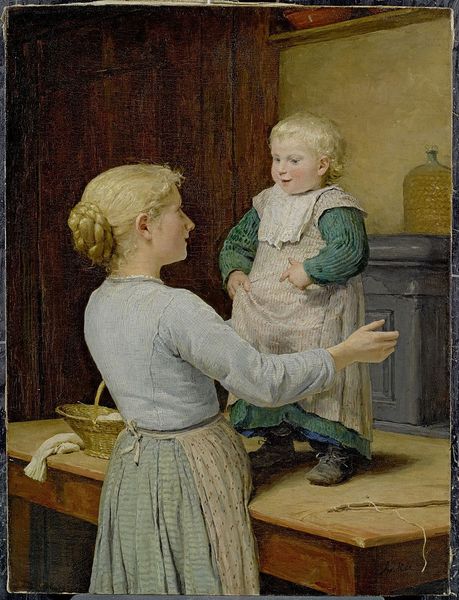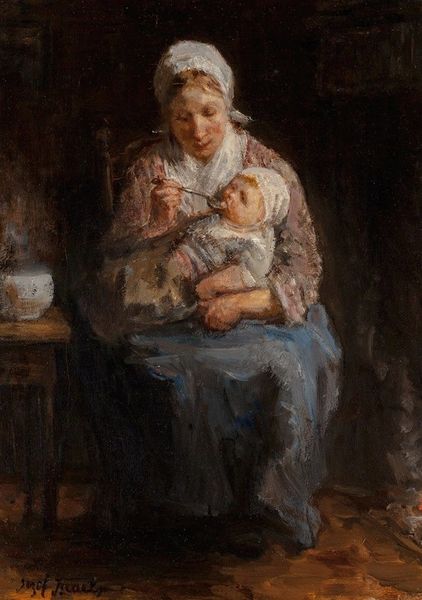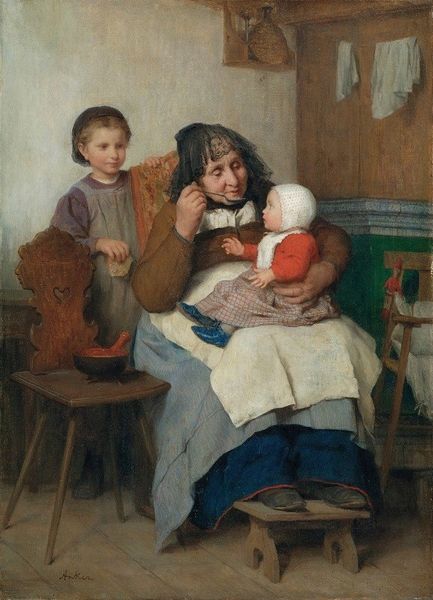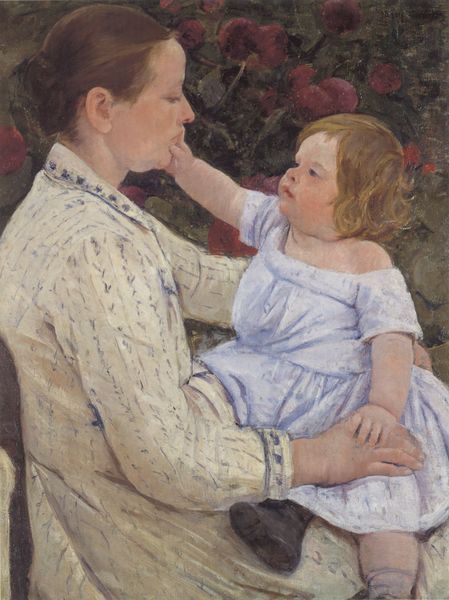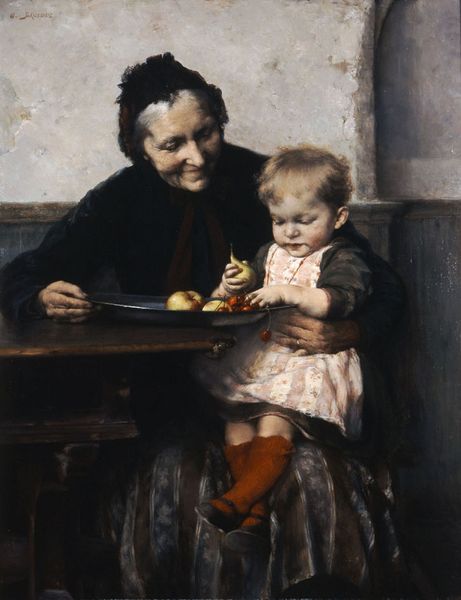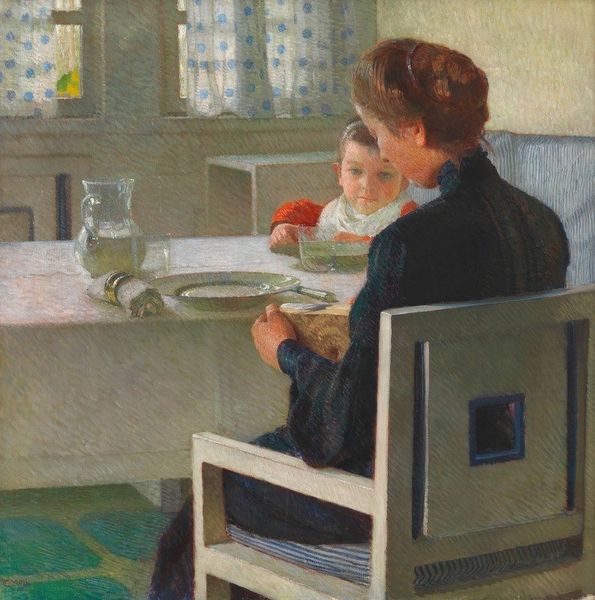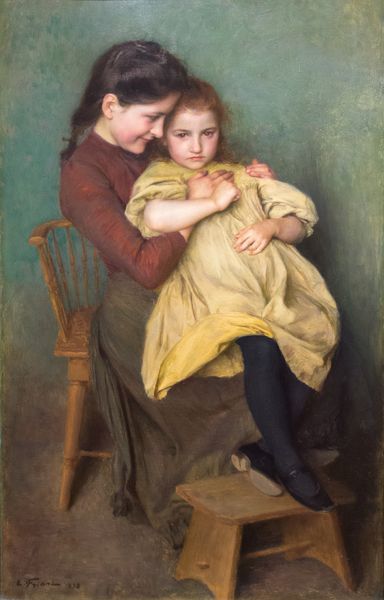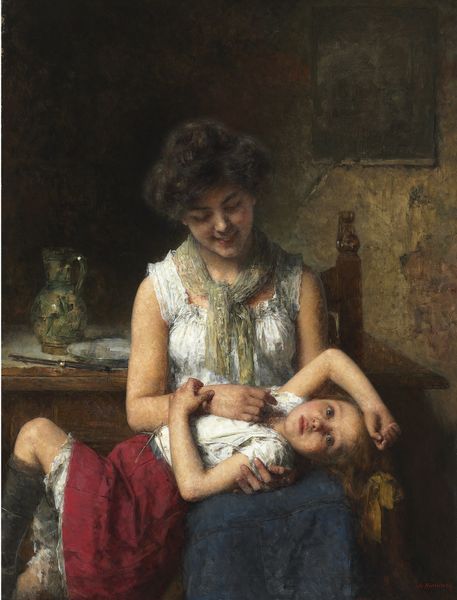
painting, oil-paint, wood
#
portrait
#
painting
#
oil-paint
#
oil painting
#
symbolism
#
wood
#
genre-painting
#
realism
Dimensions: 41 cm (height) x 32.5 cm (width) (Netto)
Curator: This is "Marie får mad" or "Marie Gets Food" by Joakim Skovgaard, painted in 1906. It’s an oil on wood and it resides here at the SMK, Statens Museum for Kunst. Editor: Oh, she looks hesitant! That poor child looks like she's being force-fed cod liver oil! You can almost taste the reluctance radiating from her little face. The green wall behind also gives off a somber, perhaps melancholy, tone. Curator: Well, and I think it’s also important to contextualize genre paintings within their social milieus. This work depicts a very specific domestic scene, common in that period. Motherhood, the role of women in the home—these were central themes in late 19th and early 20th century art, particularly in Scandinavian countries. We should address this from a feminist point of view and examine how it represented the expected duties of women in that period, focusing on their childcare. Editor: Agreed, but my immediate reaction veered elsewhere! Notice the portraits on the wall behind them—layers of family history looming over this mundane yet fraught moment. Are they silent observers, perhaps commenting on expectations across generations? Curator: That's a fascinating reading! This element can add a layer of commentary, subtly highlighting the societal pressures imposed upon women to nurture and care for their children. Editor: Precisely. Plus, I love the contrast between the mother's patterned blouse and the crisp white of the child's dress – simple joys amidst the backdrop of generational expectations. Curator: It would be interesting to compare Skovgaard’s approach to similar works by his contemporaries and consider whether his portrayal of domesticity challenges or reinforces existing power dynamics. How are those experiences and expectations filtered through race, class, and ethnicity? Editor: That's brilliant; considering those intersectional experiences allows us to not only understand art on its own, but as a time capsule for social norms and expectations. Food, family, duty—it's all in the details here. Thank you! Curator: It's certainly food for thought. Looking at the artist through this lens has also offered us something different.
Comments
No comments
Be the first to comment and join the conversation on the ultimate creative platform.


